Abstract
There is considerable potential for worker exposure to tetrachloroethylene, both by skin contact and by inhalation, during its use in dry cleaning and degreasing operations. This paper reviews accounts of both accidental overexposures of workers and controlled exposures of human subjects by these two routes of exposure. Several reported cases of accidental overexposure to anesthetic doses of the chemical reveal that recovery was generally complete but prolonged, and accompanied by many days of measurable levels of the chemical in the patient's alveolar breath. Chronic overexposures of workmen have lessened since the general acceptance by the Western world of the recommended TLV of 100 ppm for 8 hr of daily exposure. Controlled inhalation studies with volunteer subjects at this level of exposure revealed no effects upon health but did indicate a slight decrement in performance on a coordination test. Additional behavioral and neurological tests revealed no interactive effects when alcohol or diazepam, two depressant drugs, were added singly to tetrachloroethylene exposures. Individual susceptibility to the vapor of this chemical, as evidenced by subjective complaints, was noted in approximately one of ten subjects. The authors conclude that the TLV concentration of 100 ppm in the workplace has a negligible margin of safety regarding unimpaired performance during repeated exposures which could be especially hazardous if the worker is physically active or is in a situation where skin absorption presents an added burden.
Full text
PDF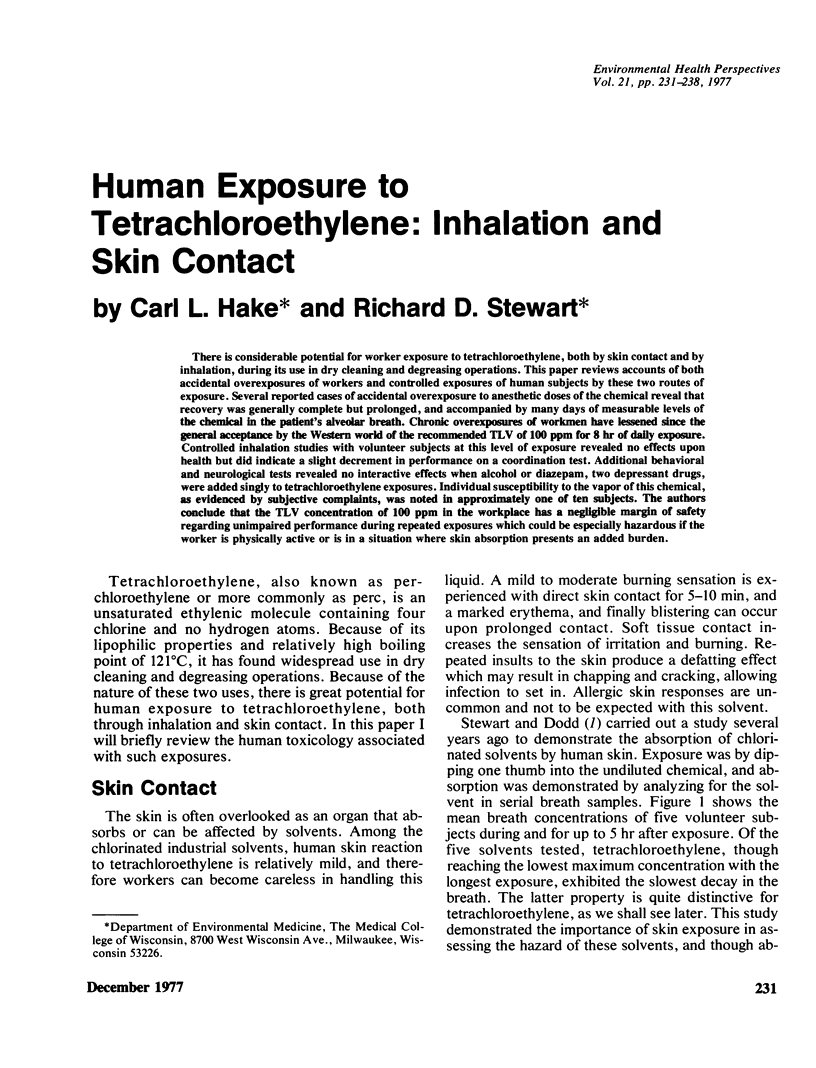
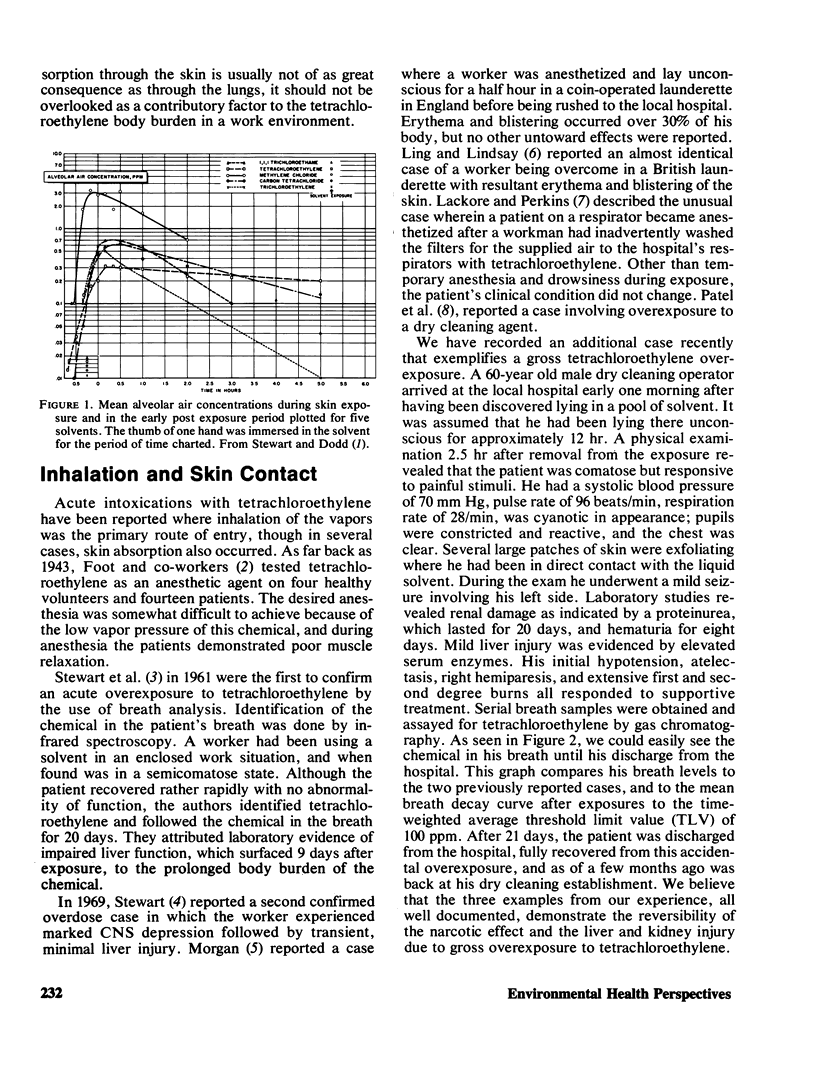
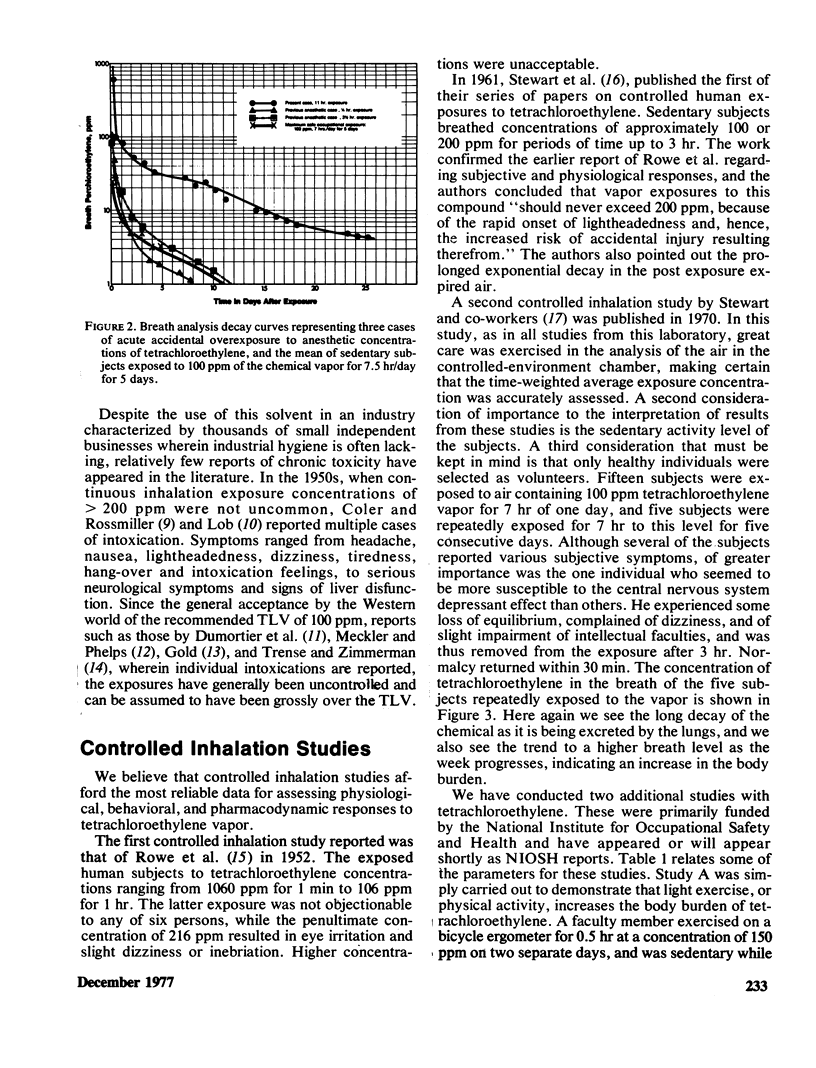
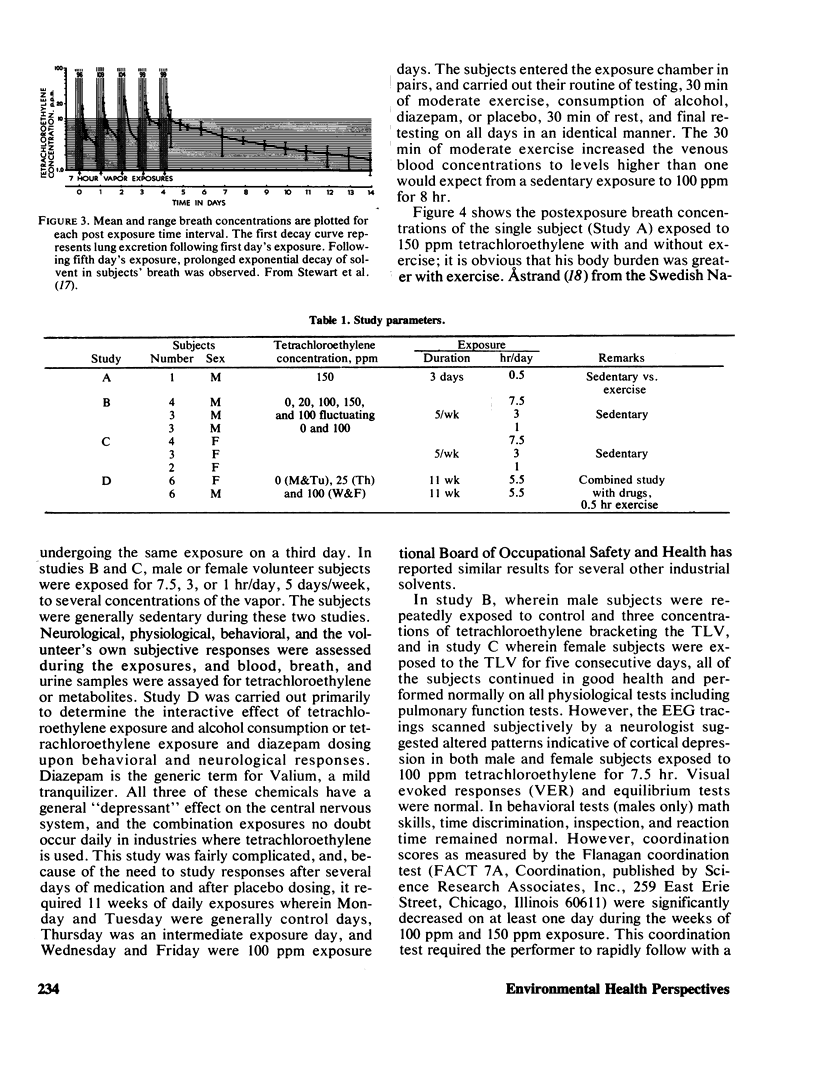
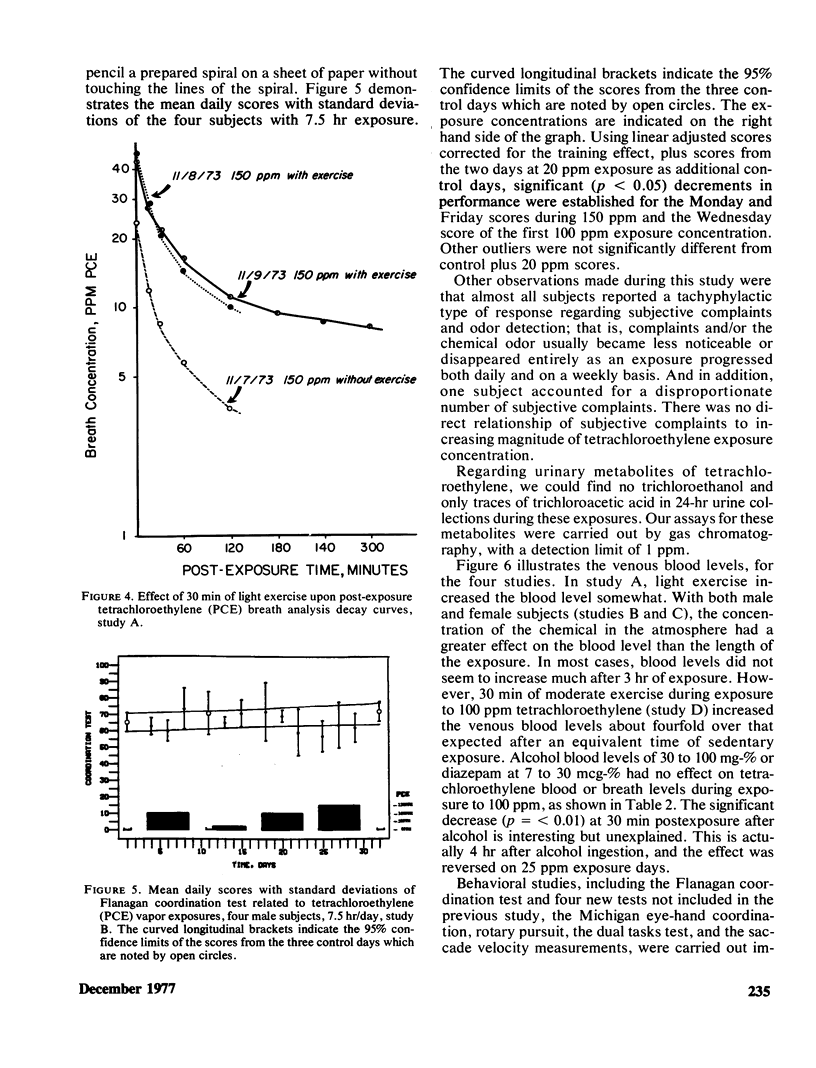
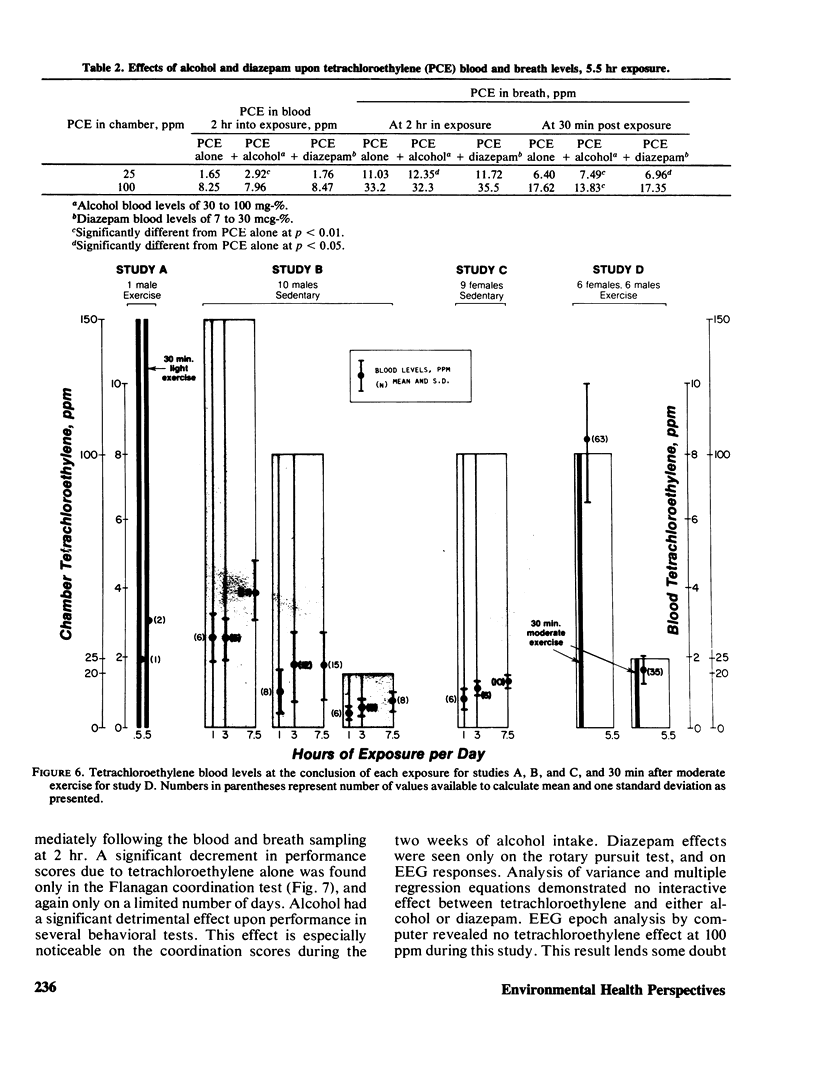
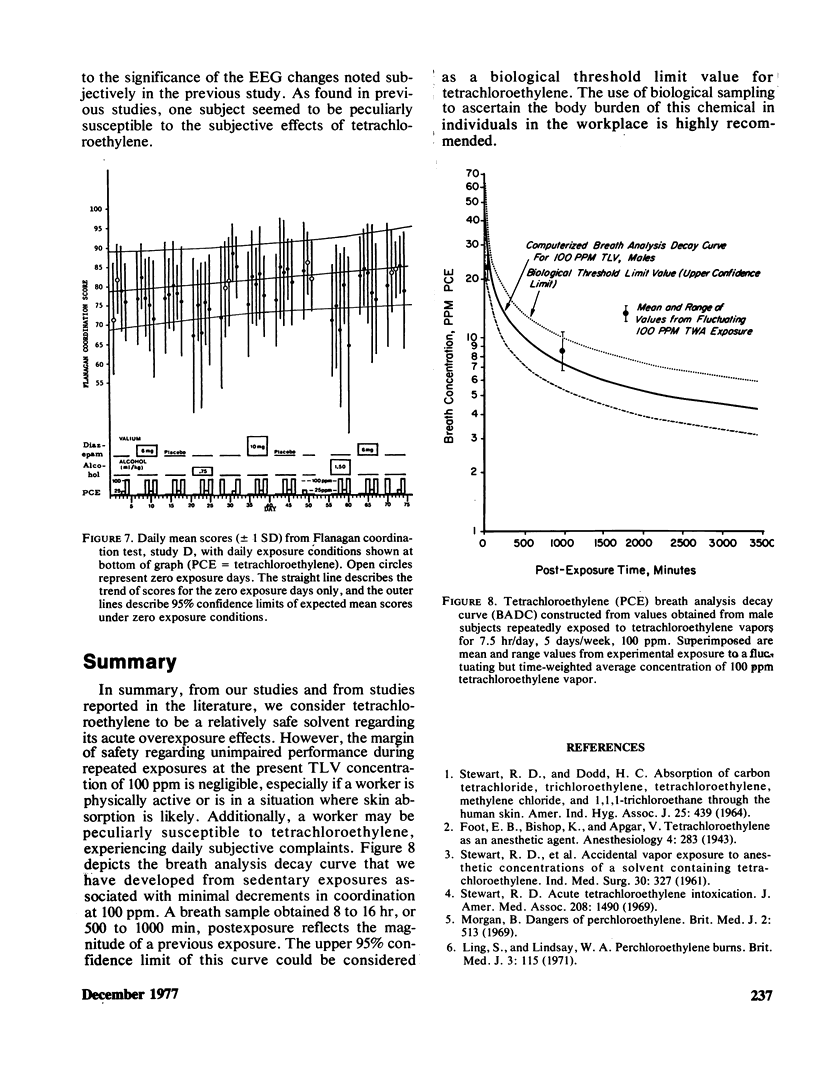
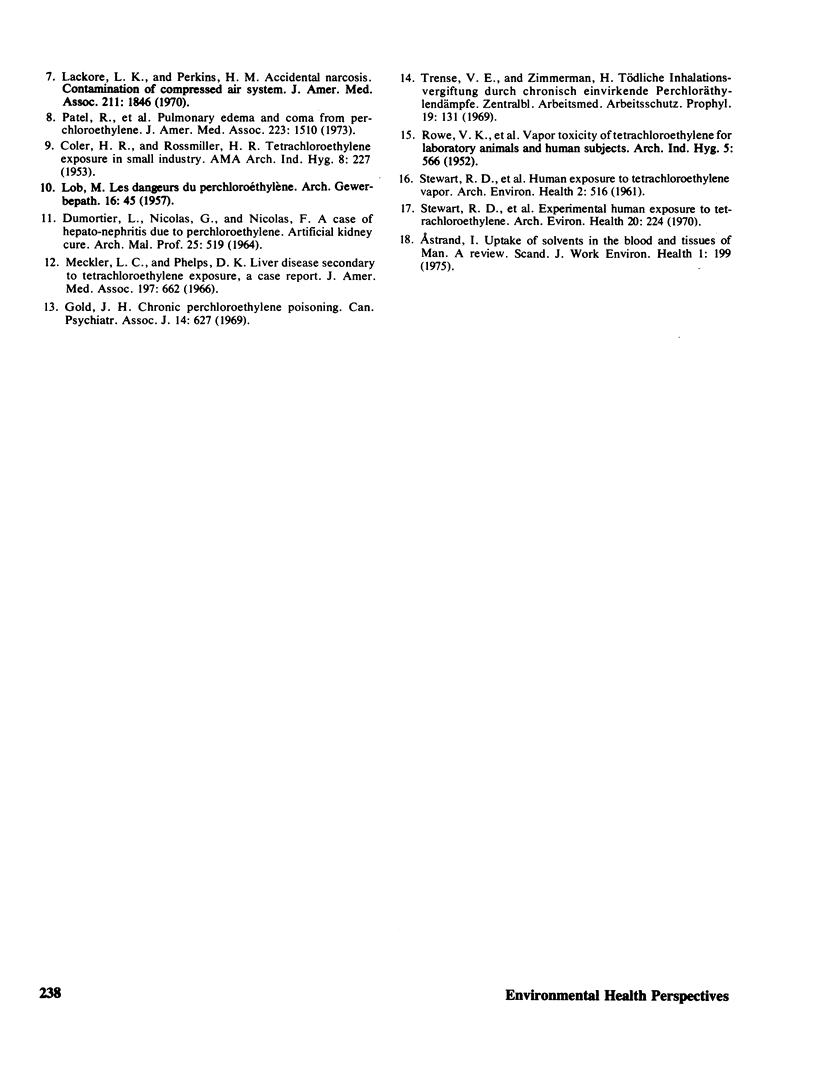
Selected References
These references are in PubMed. This may not be the complete list of references from this article.
- Astrand I. Uptake of solvents in the blood and tissues of man. A review. Scand J Work Environ Health. 1975 Dec;1(4):199–218. [PubMed] [Google Scholar]
- COLER H. R., ROSSMILLER H. R. Tetrachlorethylene exposure in a small industry. AMA Arch Ind Hyg Occup Med. 1953 Sep;8(3):227–233. [PubMed] [Google Scholar]
- Gold J. H. Chronic perchlorethylene poisoning. Can Psychiatr Assoc J. 1969 Dec;14(6):627–630. doi: 10.1177/070674376901400612. [DOI] [PubMed] [Google Scholar]
- LOB M. Les dangers du perchloréthylene. Arch Gewerbepathol Gewerbehyg. 1957;16(1):45–52. [PubMed] [Google Scholar]
- Lackore L. K., Perkins H. M. Accidental narcosis. Contamination of compressed air system. JAMA. 1970 Mar 16;211(11):1846–1846. doi: 10.1001/jama.211.11.1846. [DOI] [PubMed] [Google Scholar]
- Ling S., Lindsay W. A. Perchloroethylene burns. Br Med J. 1971 Jul 10;3(5766):115–115. doi: 10.1136/bmj.3.5766.115-b. [DOI] [PMC free article] [PubMed] [Google Scholar]
- Meckler L. C., Phelps D. K. Liver disease secondary to tetrachloroethylene exposure. A case report. JAMA. 1966 Aug 22;197(8):662–663. [PubMed] [Google Scholar]
- Morgan B. Dangers of perchlorethylene. Br Med J. 1969 May 24;2(5655):513–513. doi: 10.1136/bmj.2.5655.513. [DOI] [PMC free article] [PubMed] [Google Scholar]
- Patel R., Janakiraman N., Johnson R., Elman J. B. Pulmonary edema and coma from perchloroethylene. JAMA. 1973 Mar 26;223(13):1510–1510. [PubMed] [Google Scholar]
- ROWE V. K., McCOLLISTER D. D., SPENCER H. C., ADAMS E. M., IRISH D. D. Vapor toxicity of tetrachloroethylene for laboratory animals and human subjects. AMA Arch Ind Hyg Occup Med. 1952 Jun;5(6):566–579. [PubMed] [Google Scholar]
- STEWART R. D., DODD H. C. ABSORPTION OF CARBON TETRACHLORIDE, TRICHLOROETHYLENE, TETRACHLOROETHYLENE, METHYLENE CHLORIDE, AND 1,1,1-TRICHLOROETHANE THROUGH THE HUMAN SKIN. Am Ind Hyg Assoc J. 1964 Sep-Oct;25:439–446. doi: 10.1080/00028896409342621. [DOI] [PubMed] [Google Scholar]
- Stewart R. D. Actue tetrachloroethylene intoxication. JAMA. 1969 May 26;208(8):1490–1492. doi: 10.1001/jama.208.8.1490. [DOI] [PubMed] [Google Scholar]
- Trense E., Zimmermann H. Tödliche Inhalationsvergiftung durch chronisch einwirkende Perchloräthylendämpfe. Zentralbl Arbeitsmed. 1969 May;19(5):131–137. [PubMed] [Google Scholar]


